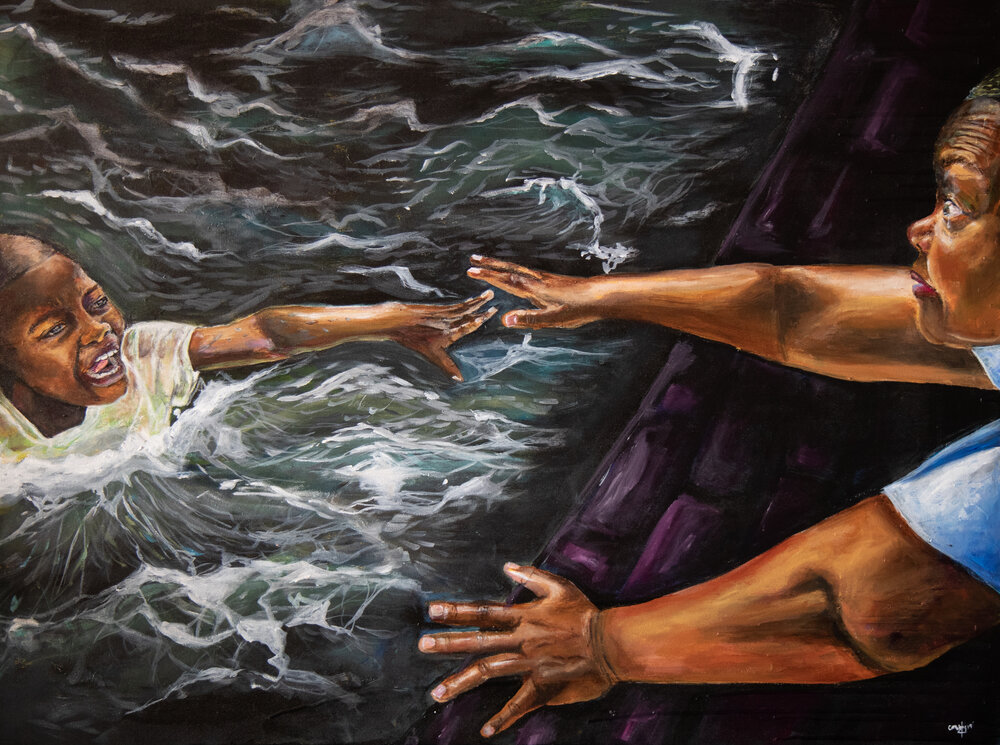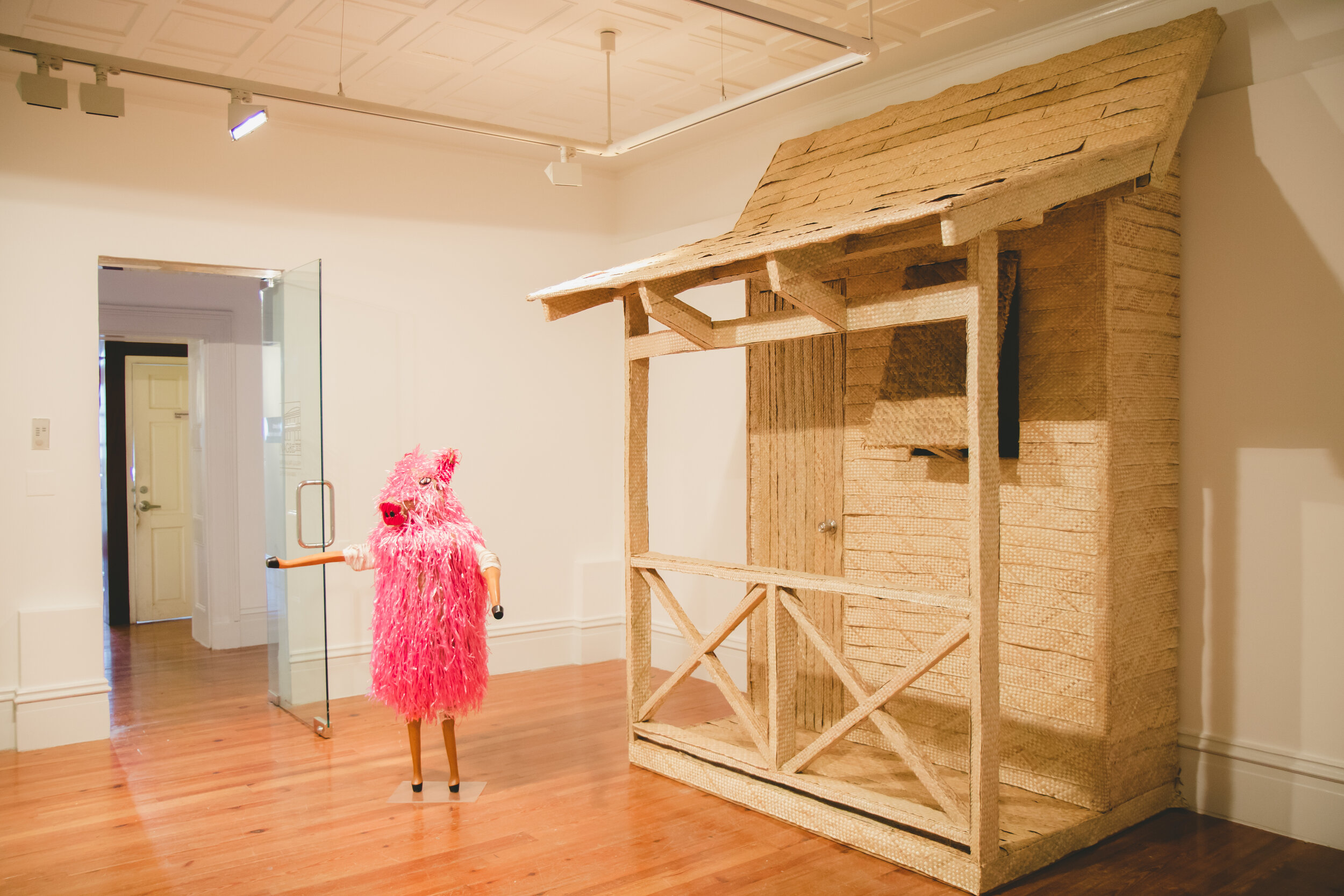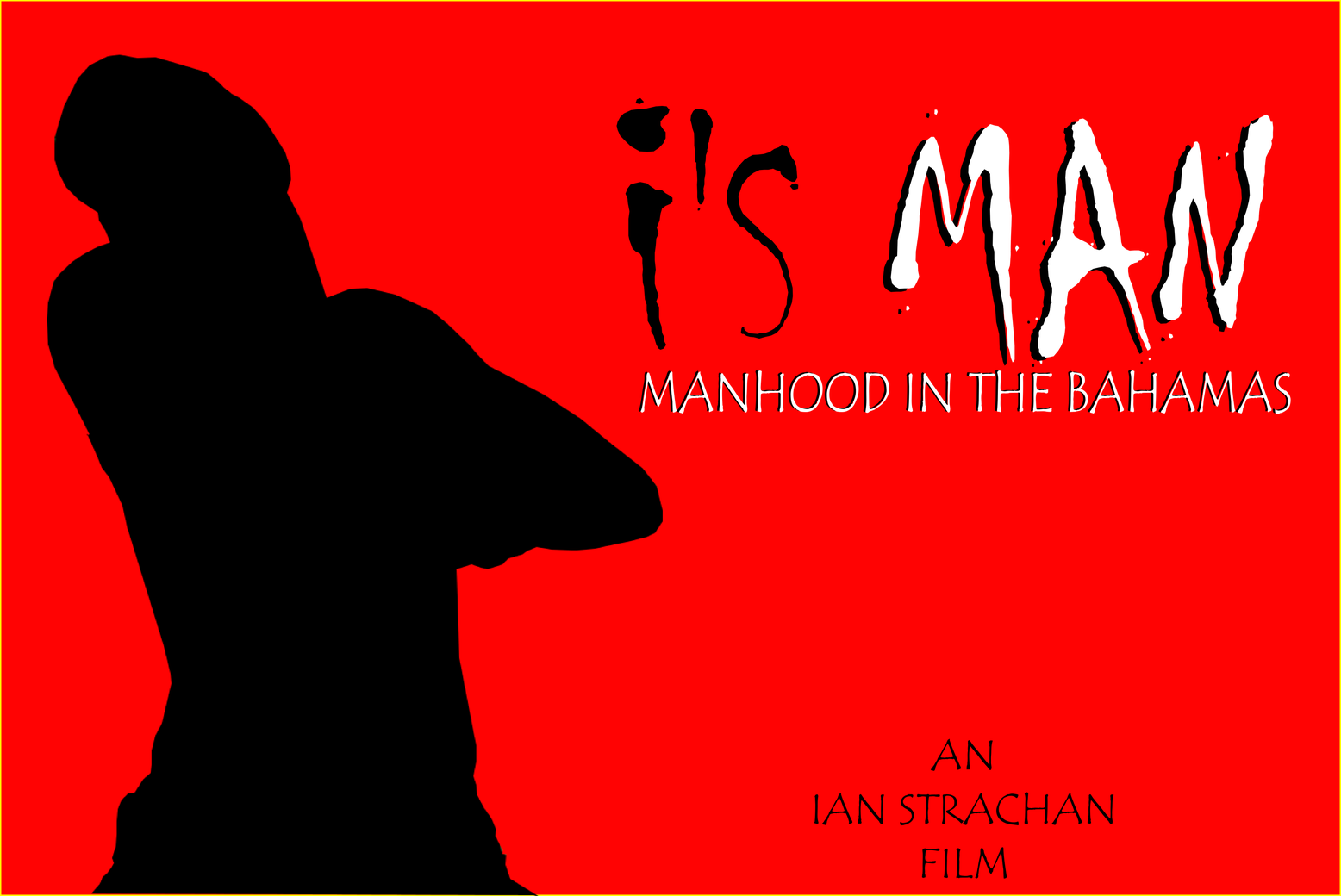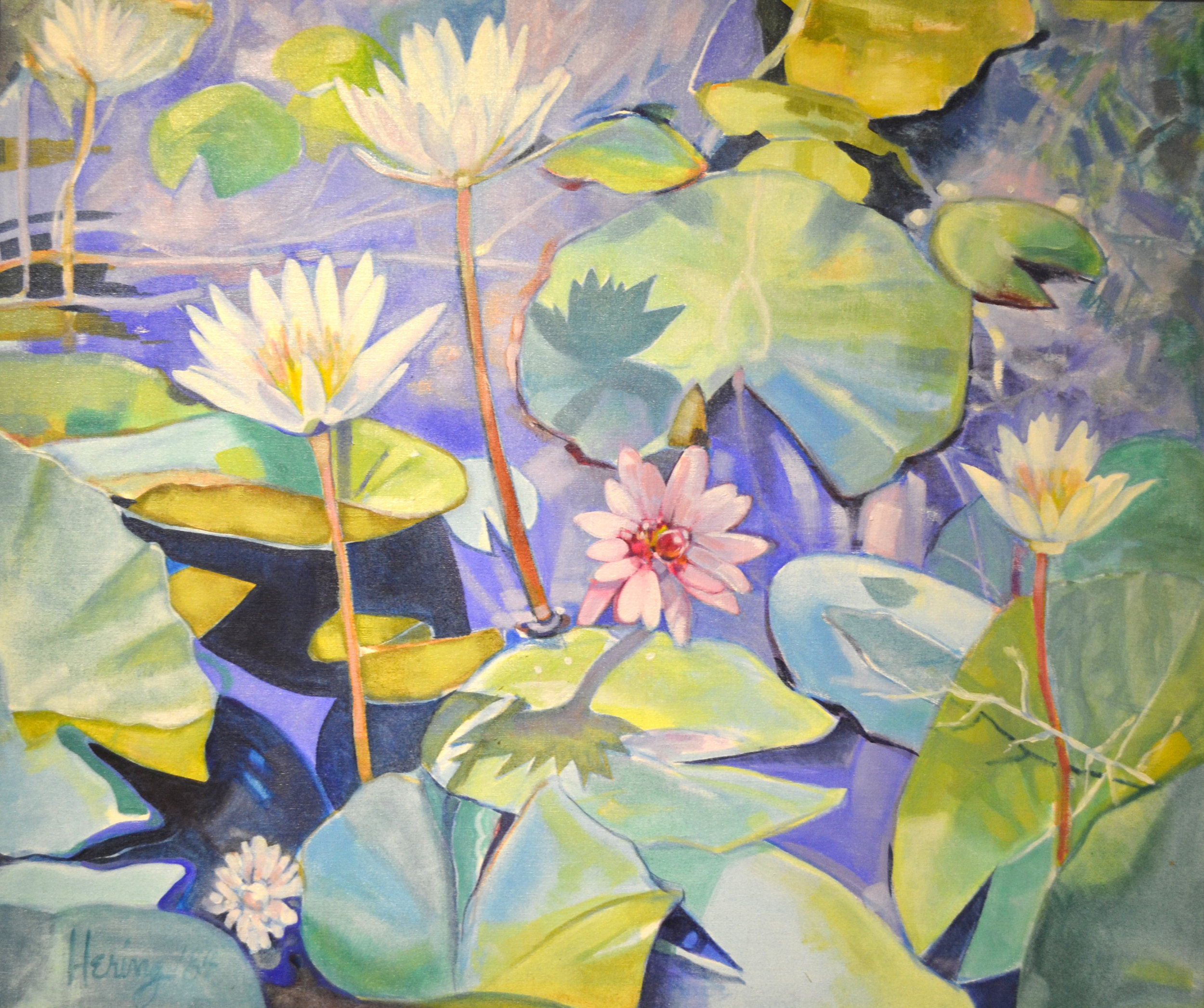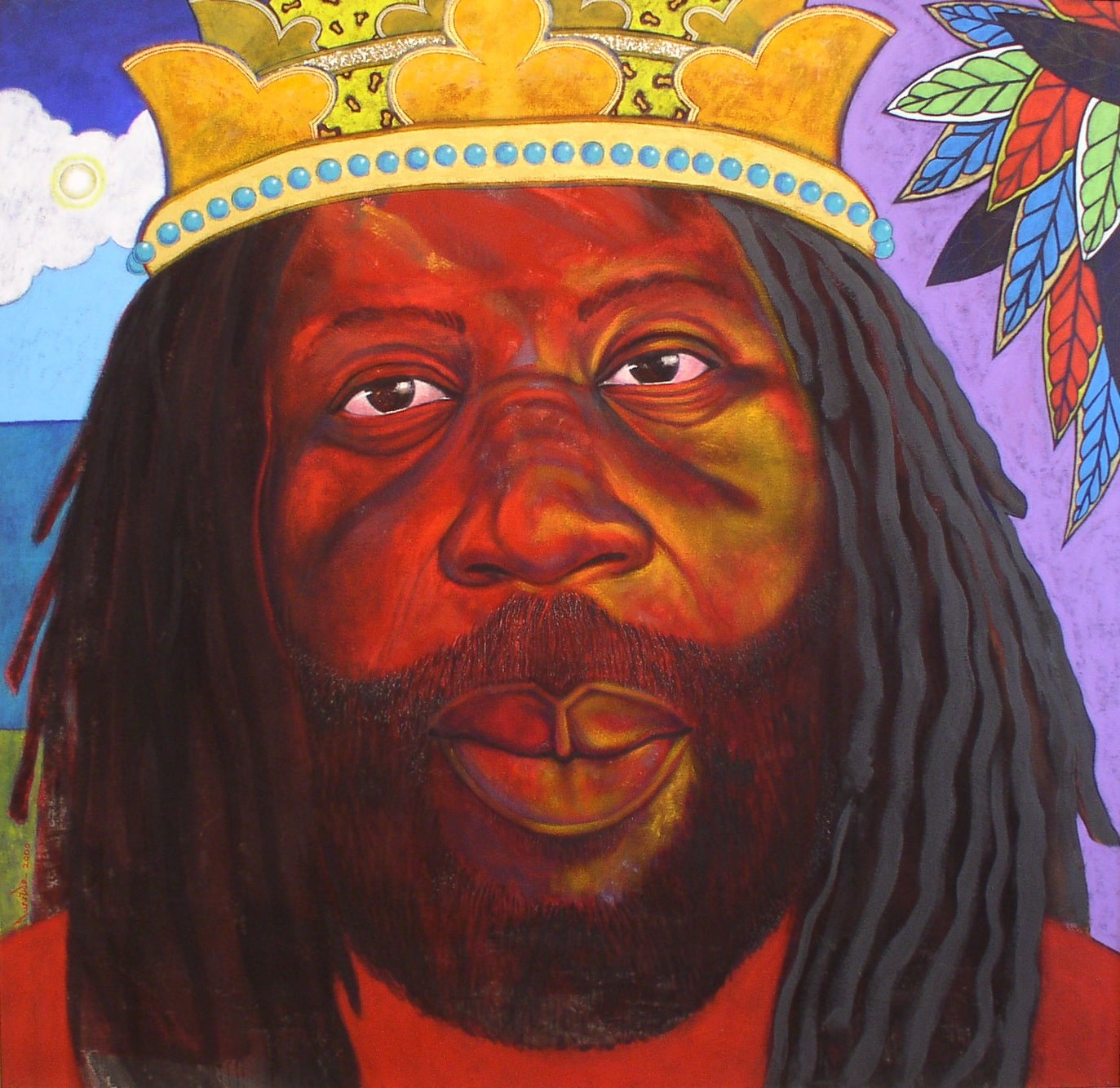As life on islands finds a new normal, we see the importance of connectivity and awareness. Much has been revealed by Dorian’s passage, from the lack of bill payment by some agencies for private companies’ services to aid storm victims, to the need for closer links between people with communities. The beauty of art is that it can capture so many emotions and open up valuable conversations about how and where we live. Naomi Klein in her work The Battle for Paradise (2019), illustrates the gap between words used to rebuild in Puerto Rico in the wake of Maria and Irma and the reality of dispossession and displacement.
Currently browsing: Stories
Max and Amos: Enchantment and Magical Realism in Service to Freedom
Reviews of the permanent collection of the National Art Gallery of The Bahamas (NAGB) should always demand an examination of the works and aesthetics of two of the country’s outstanding and prolific indigenous artists, Amos Ferguson (1920-2009) and Maxwell Taylor, better known as “Max”. Ferguson has a particular call on prominence in this regard because it was the Bahamas Government’s purchase of twenty-five of his paintings in 1991 that launched the National Collection.
The Straw Paradox
By Natalie Willis. Averia Wright’s “The Straw Paradox: The Pig That Built His House of Straw” is something of a paradox in the name itself. Straw work in The Bahamas is a bit of a misnomer – it isn’t really “straw” in the Western traditional sense at all. Our straw is not made of barley, wheat or things of that ilk at all, rather, it is a pale gold weaving made of Silver Top Palm. Wright comes from a family of straw market women, and has been plaiting her whole life.
I’s Man: Ian Strachan’s documentary on masculinity in The Bahamas captures the polemics of today’s ‘Man Crisis’.
By Dr Ian Bethell-Bennett, University of The Bahamas. English Social Sciences organised a screening and panel discussion of the film I’s Man at the University of The Bahamas on Wednesday, November 6th, at 6:00 p.m. The room was packed as students and faculty from sociology, psychology, English and the general public came out to discuss the current ‘man crisis’. The film captures perspectives from multiple angles that discuss the imagery of black masculinity and its descriptors from objectifying women in batty riders to murder for glory because of ego issues: the intersections of sexuality and socio-cultural and economic pressures conflate to conform to roles society perceives as normal and in turn normalises. If men do not consume women like that, something must be wrong with them. Much is documented in the film of the ways black masculinities are defined and controlled by a capitalistic, hegemonic racialised system that seeks to disempower through weaponised messaging and stereotyping. Meanwhile, the documentary reveals this underside.
The Sea as Life: Cargo and VLOSA
By Dr. Ian Bethell-Bennett, The University of The Bahamas. It is the Visual Life of Social Affliction that speaks out against silence imposed over death. Undocumented death. If one lives an undocumented life, does one die an undocumented death?
The sea as life
One is buoyed on by levity, not dropped like a lead weight to the bottom of the sea, where there are souls that link from Africa to the New World and back again. These disembodied figures, souls linking lands, the submarine link, or submerged mother of Edward Brathwaite’s creation bind us together. They travel up from Haiti through the Ragged Island passage to northern shores. This is life suspended in a watery elixir of death and blue green beauty: the irony of nature.
Peggy Hering’s “Lilies” (1984): On Being Both Student and Teacher
Peggy Hering’s “Lilies” (1984) invites reflection on movement and permanence in the Caribbean. This rare piece from the Dawn Davies Collection offers a glimpse into the life of an artist whose story is woven into Nassau’s past.
From the Collection: “Solomon” (2000) by Stan Burnside
By Natalie Willis. King Solomon, the biblical king of Israel, is revered in Christianity, Judaism, Islam and Rastafarianism alike. A wealthy and wise man (the latter of which people the world over feel are missing in leadership), he was known for his sense of justice and morality, and perhaps most famously known for settling a dispute between two women who fought over the guardianship of a child. We’ve most often seen this son of David, the successor to the throne, depicted as a wizened old man with a beard, looking every inch the grandfather. Why then, do we seem to get such contrasting reactions to Stan Burnside’s “Solomon” (2000) in our space? People claim to love the large scale work or despise it. We’ve had to move it from external spaces on loan because it was seen as “too much” or disconcerting – which feels rather unsettling for our dear Gallery + Collections Assistant, Matthew Rahming, whose likeness is often compared to that of Burnside’s king.
Adaptability & Draughts(woman)ship: Kachelle Knowles Builds a Practice of Representation That Takes Action
By Natalie Willis. We are not used to seeing ourselves outside of the lens of tourism as Bahamians. This is troublesome for a newly-independent nation not yet 50 years old, and with 200 years of tourism weighing in above our heads. The decolonial work of imaging ourselves as Bahamians (particularly as Black Bahamians) is slow-going but gaining more visibility. The representation for many of our Black non-Bahamian people of this nation is in a more dire state. These observations and lines of questioning are brought to the forefront in Kachelle Knowles’ delicate and tenderly draughted portraits of the Black Bahamian man in her body of work for “Bahamian Man Since Time,” which recently closed in the NAGB’s Project Space. In the aftermath of Hurricane Dorian and its painful shifts and turns – and in the museum’s efforts to respond appropriately to hurricane efforts, we wanted to share some words on the exhibition as it became the site of a donation centre for Equality Bahamas and Lend-A-Hand Bahamas. These works were the backdrop to so many of your efforts to assist and to be supported.
Traditional Knowledge Living in the Tropics: Respecting Lifeways
As Dorian’s wake remains with us, do we have time to consider the indigenous, traditional knowledge of the Abacos? Abaco, similar to Inagua and Crooked Island in the south, and even Bimini in the North, has dealt with its share of natural disasters and man-made shocks. Its people are deeply connected to their lifeways and arts.
From the Collection: “North Star” (2007-8) by Heino Schmid
By Natalie Willis. Landmarks are such a common way to give directions we often think nothing of it. In some cities it could be the tallest building, in most, it was historically a cathedral as it was in old Nassau, and in others still an old water tower. Landmarks hold significance, they become a fixed point of reference that we navigate around or through, often in the periphery just so that your little satellite of a body knows where it is in relation to this sentinel. Heino Schmid’s video artwork “North Star” (2007-8), first shown as part of NE4, the Fourth National Exhibition back in 2008, gives us a moment to consider the significance of having the imposing and distinctive structure of the Atlantis hotel as a marker within our landscape.
